Tips for Choosing Nylon vs. Polyester Gloves
Posted by Anthony Webb on Dec 4th 2024
If you have purchased general-purpose gloves or protective clothing, you've probably experienced wearing synthetic fabrics. Nylon and polyester are the most commonly used synthetics today worn across various applications and industries. Both make terrific liners for the lightweight gloves needed to perform assembly tasks and handle small items. So, what is the difference between each fabric?
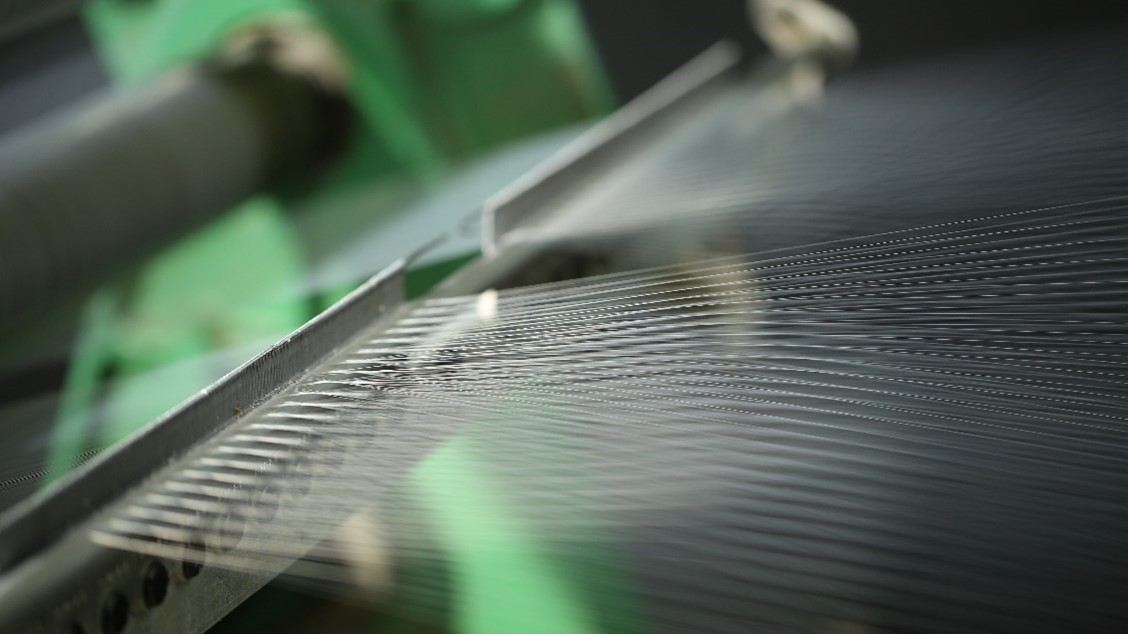
Nylon and polyester enable the manufacturing of a vast array of products due to their affordability, durability, and fast production times.
Materials matter when choosing work gear and PPE, so MCR Safety dedicates time and energy to ensuring our customers know the differences in products. This article discusses the essential characteristics of nylon and polyester and highlights their primary differences. We'll also cover the top choices for nylon and polyester clothing, plus answer some common questions about these materials.
Nylon Fabric
![]()
What is nylon? It's a synthetic thermoplastic linear polyamide (PA) created by Wallace Carothers of the DuPont Company in the early 1930s. The earliest form of nylon, known as Nylon 66, is still one of the most common forms used across industries today. Nylon 66 is a polymer made from water, hexamethylene diamine, and adipic acid combined in solution to create nylon salt. After being washed, chipped into pellets, spun, and air-cooled to solidify its fiber form, by the process' end, it is eventually transformed into nylon filaments brought together as yarn.
The popularity of nylon yarn increased dramatically during World War II when natural materials like rubber and silk were scarce, and demand was at an all-time high for parachutes, ropes, and tires. It also served an essential role in reinforcing clothing and rubber tires. Before the war, over 80% of all material used cotton-based fibers. By the war's end in 1945, synthetic nylon commanded over 25% of the market, primarily due to the easy and low-cost production of stockings and lingerie. Factories had discovered that nylon was one of the world's most robust, friction-resistant materials that quickly transformed into numerous desired shapes at a relatively low cost.

Allied aircraft dropped paratroopers during World War II. Their parachutes utilized the relatively new nylon material.
Nylon is so strong that it is used instead of low-strength plastics and metals in many commercial and industrial uses. Here are some of its essential characteristics:
- Highly elasticity
- Increased tensile strength
- Dries rapidly
- Able to be dyed into numerous colors
- Resistant to damage from chemicals
- Excellent heat-resistant properties
![]()
Nylon is often paired with lycra/spandex to ensure softness.
Nylon also absorbs moisture due to its hydrophilic nature, meaning garments can be wetted by water more quickly than some other materials. However, nylon's strengths outweigh its deficiencies, and it continues to be a popular material choice for various applications. Below are some of the numerous applications found with nylon.
Nylon uses:
- Clothing – hats, lingerie, shirts, hi-vis clothing, ponchos, underwear, swimwear, nylon thread
- Defense – parachutes, tactical gear
- Fishing Industry – fishnets, ropes
- Automotive Industry – airbags, bearings, harness connectors, timing belts
- Manufacturing and Warehousing – conveyor belts, fasteners, machine parts
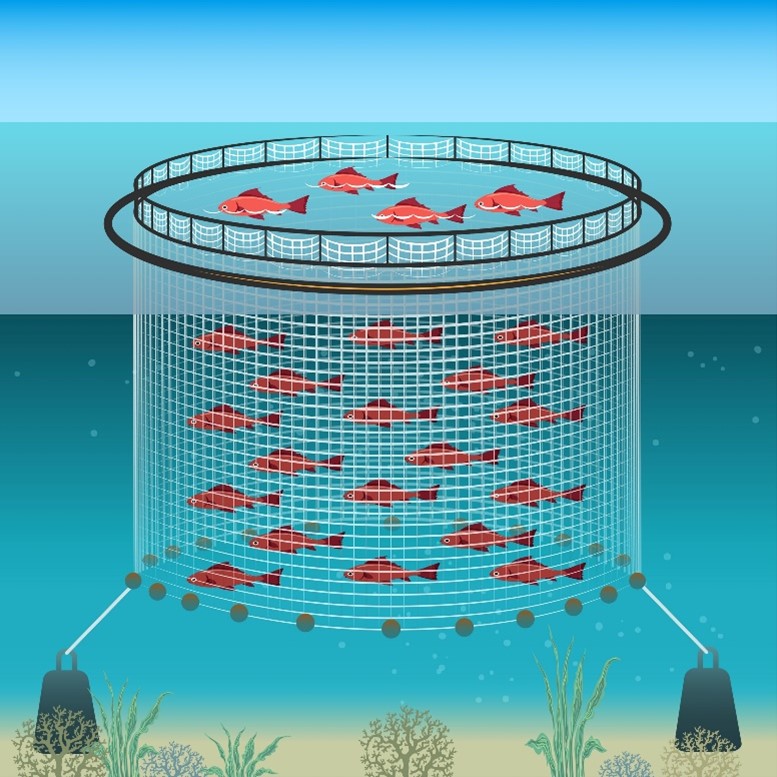
Fishnet
Polyester Fabric
![]()
What is polyester? The synthetic polyester material also referred to as polyethylene terephthalate (PET), became popular during the 1970s due to its low cost and ease of wear. It's known across most industries as the "workhorse fiber" for its strength and durability in a lightweight material. We can attest to that, as many of our most popular general-purpose gloves utilize polyester. From 1975 to 2021, polyester production has risen from 3.37 metric tons to over 60.53 metric tons, meaning it's found a place across industries and has become indispensable to society.
Like nylon, most polyester resin derives from petroleum-based products. Polyester is created through a process known as polymerization, which melts down mono-ethylene glycol (MEG), dimethyl terephthalate (DMT), or purified terephthalic acid (PTA) at high temperatures into a synthetic polymer known as polyethylene terephthalate (PET).
Polyester is less expensive than nylon; however, polyester offers numerous benefits outside of cost. Here are some:
- Highly UV-resistant and doesn't fade
- Incredibly water-resistant due to its hydrophobic nature
- Versatile fiber that blends well with other fibers and is used across all kinds of clothing
- Durable and resistant to many chemicals
![]()
Cotton-polyester blends are among the world's best options for clothing because cotton adds comfort and breathability.
Polyester's most significant benefit is that it combines with natural and synthetic fibers to create soft, wearable items such as gloves. On our website, we've created a filtering option that lets customers quickly identify all gloves made with polyester and cotton.
One downside to polyester is that it holds onto smells and its natural coarseness makes it scratchier on the skin when used by itself. It is something to consider this facet, especially if you plan on wearing the same gloves or garment for lengthy periods.
Recycled Polyester

Because they are technically plastic, a primary drawback to polyester yarns is that they are not biodegradable and don't easily break down. One of the latest manufacturing alternatives creates polyester yarns from recycled PET polymers derived from recycled PET bottles. Eco-friendly polyester is an excellent alternative to offset the environmental impact of brand-new polyester created from petroleum-based products that don't degrade. The more eco-friendly materials in recycled PET products drive many of the new work glove options we offer at MCR Safety. Considering the environment's future and our role in impacting it, we will continue outfitting workers with increased eco-friendly choices in the coming years.
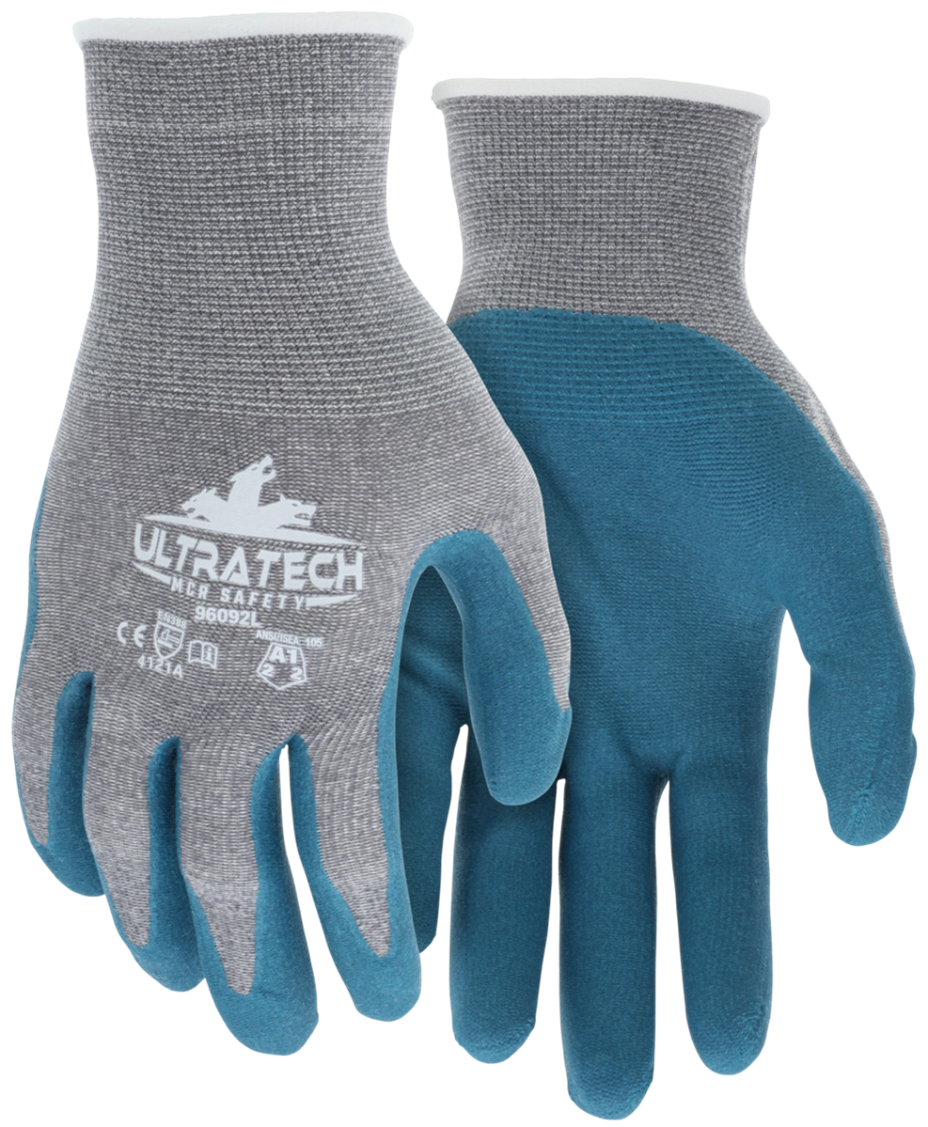
MCR Safety's 96092 is made from PET recycled polyester and features a biodegradable nitrile foam coating. Each glove contains at least one plastic bottle, reducing ocean waste and helping clean the environment!
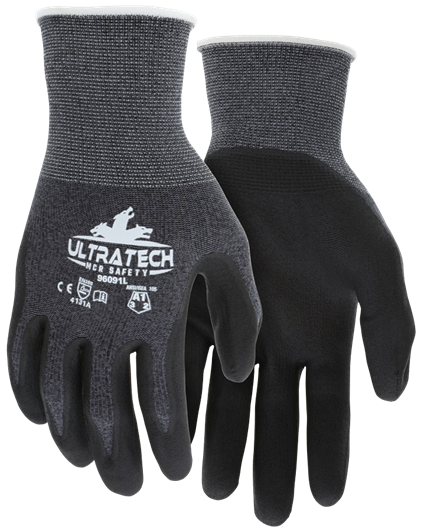
MCR Safety's 96091 derives from a similar recycled material as the 96092. However, this glove option offers a standard nitrile coating, helping decrease costs for those on a tight budget.
What Are the Differences Between Nylon and Polyester?
![]()
Although nylon and polyester are both synthetic materials with histories that trace back to the same chemist and company, they have some differences that set them apart. First, polyester is less expensive to manufacture, so products made with nylon are typically more expensive than those made with polyester. Second, nylon is softer, whereas polyester has a coarser feel if not blended with other fibers. However, recent technologies have increased the comfort of polyester, as evident with some of our recent glove additions. Third, even though both materials are highly durable, nylon is the stronger of the two.
Here are some other key takeaways:
- Nylon traps heat and moisture due to its repelling water functionality, whereas polyester is more breathable and dries faster.
- Nylon provides excellent odor resistance, whereas polyester holds onto odors.
PPE
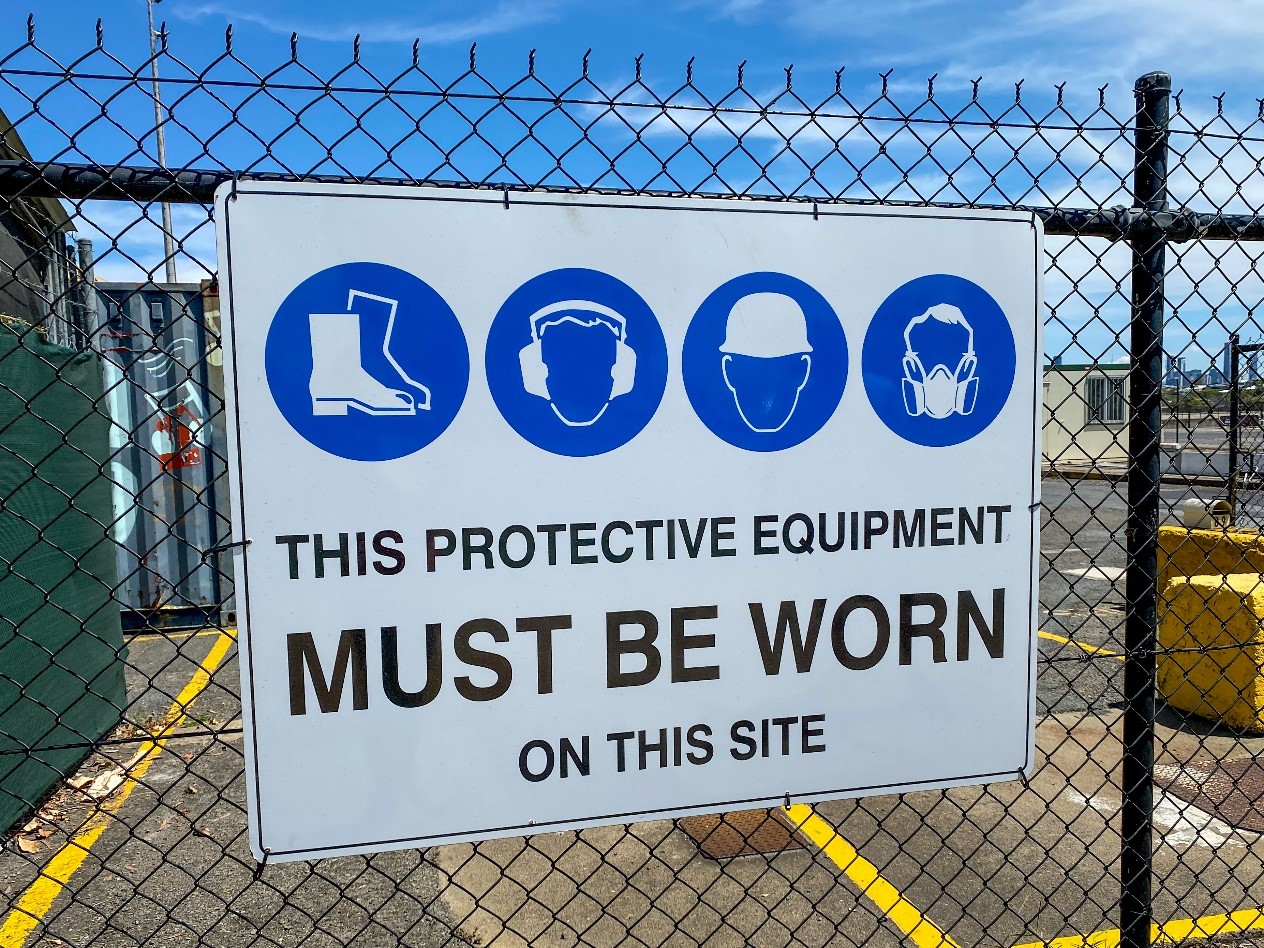
An essential characteristic of personal protective equipment (PPE) is its durability, allowing its use for multiple workdays in various environments. In addition, companies are looking for lightweight, low-cost, and breathable options for their workers. Both nylon and polyester provide all of the above, so let's highlight some of our top-selling options.
Nylon Gloves
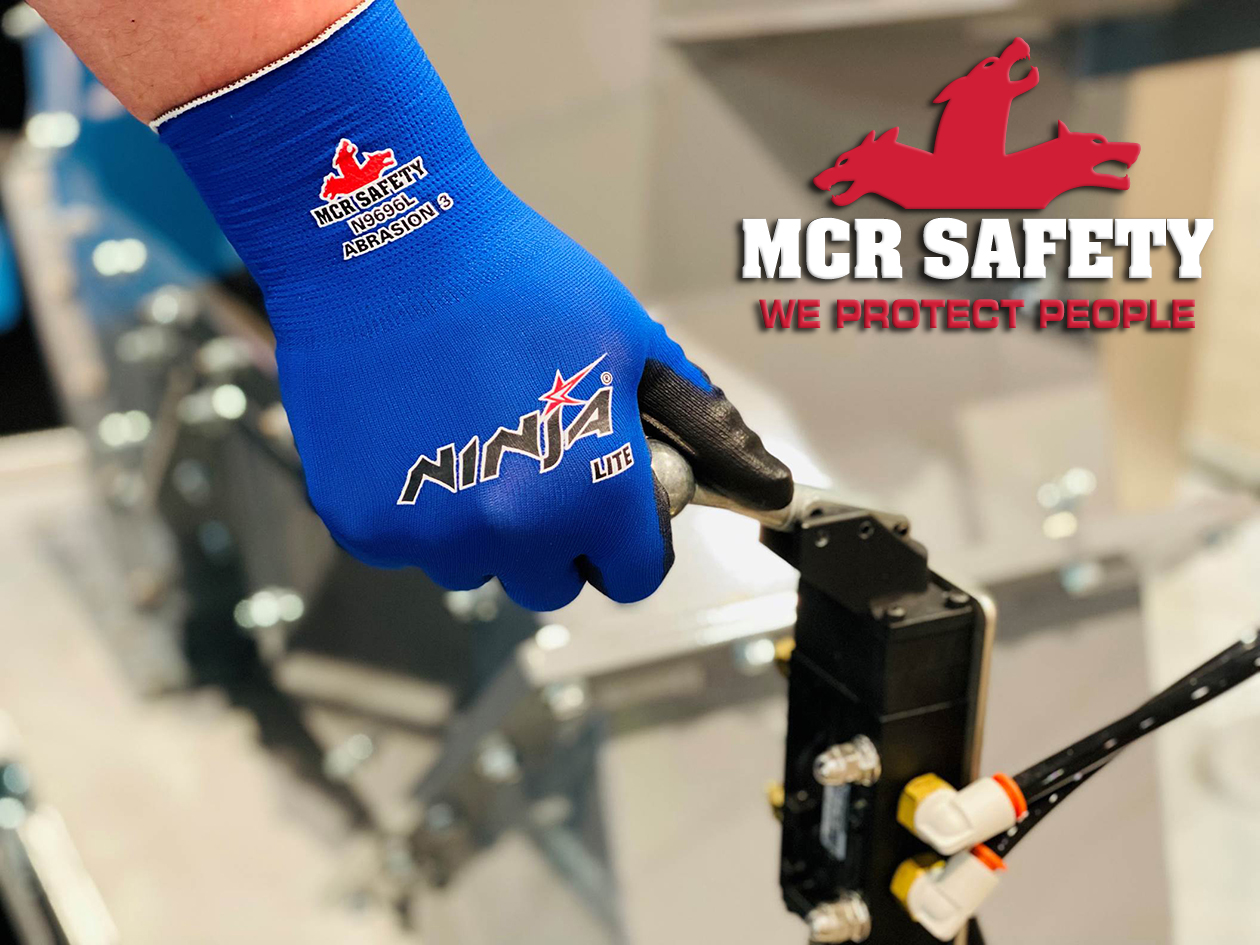
Nylon is lightweight but durable, making it ideal for work gloves. The images below showcase all the variations we offer in PU and nitrile-coated nylon options.
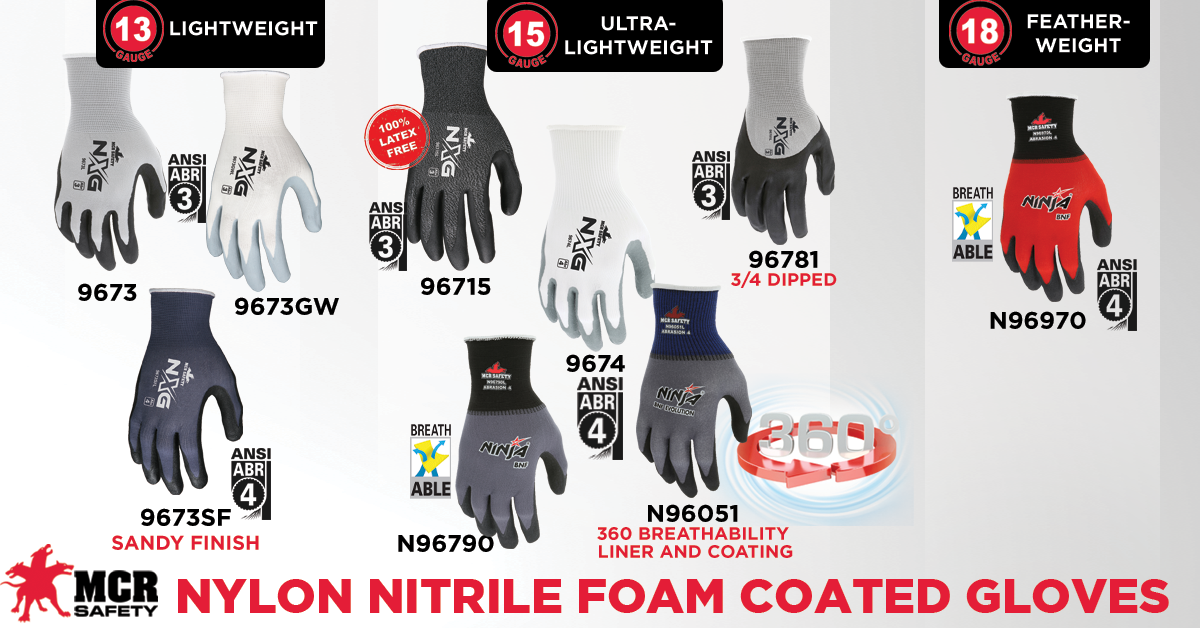
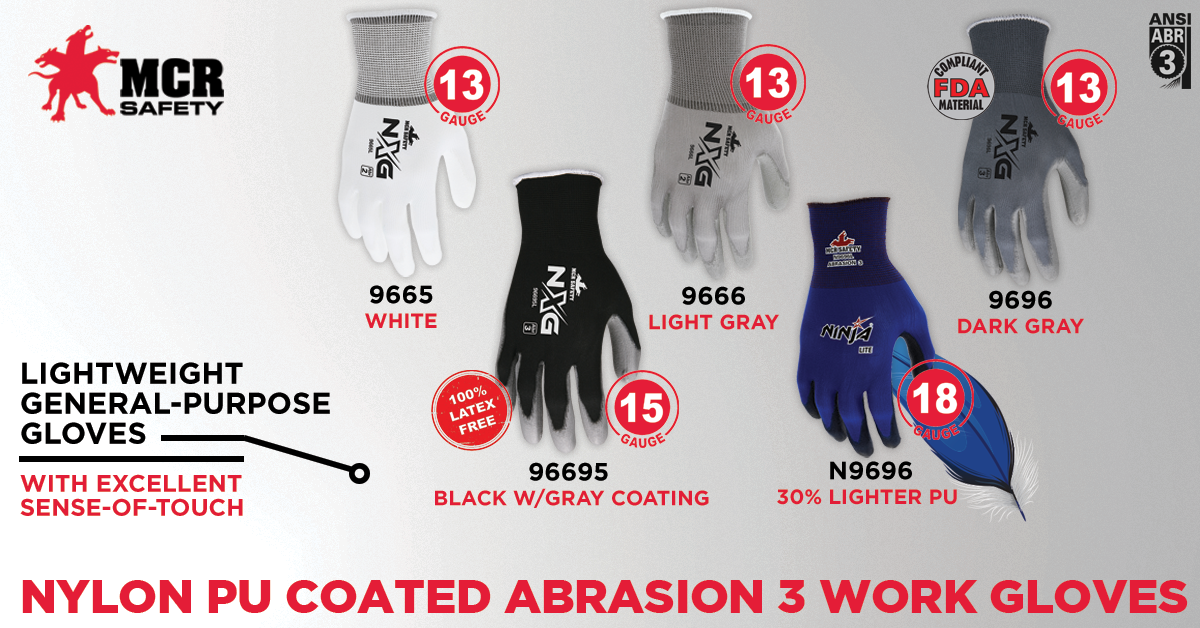
Nylon Jacket

Both nylon and polyester are used as a support layer to give rain gear additional durability and strength. Ripstop nylon in the Wizard series lasts much longer than standard nylon.
Top-Selling Polyester Gloves
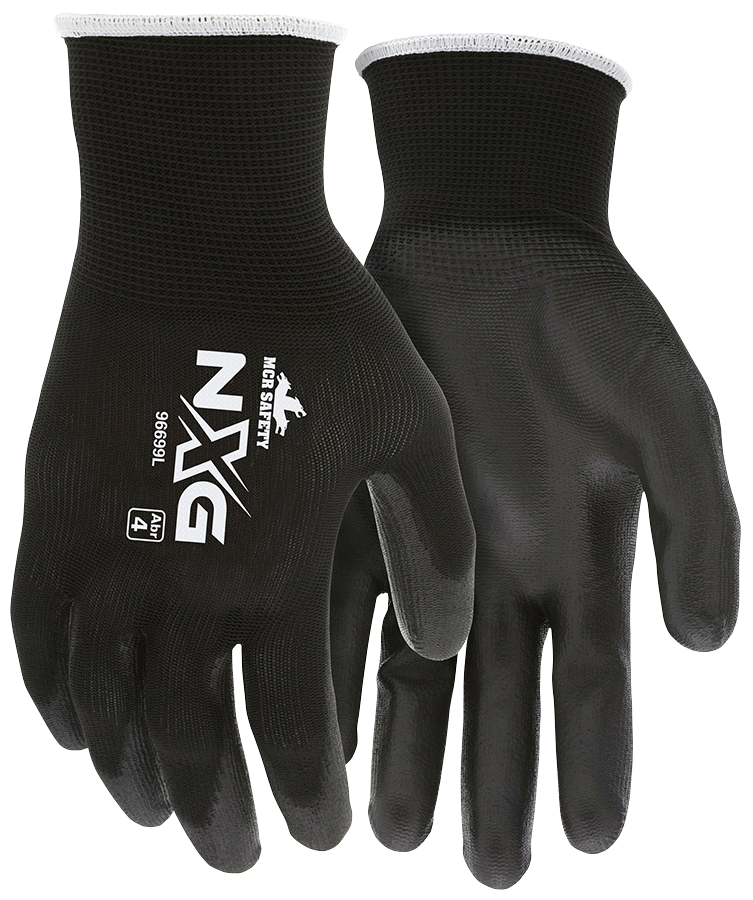
Our 96699 is a 13-gauge black polyester glove with a PU coating. It's one of the top-selling PU gloves in our lineup due to its budget-friendly price and dark black color that hides dirt and grime. In addition to the low cost, this glove option is a light-task ESD anti-static conductive glove and is ANSI/ESD SP15.1 compliant. Our new ESD article offers more info on ESD electrostatic discharge properties.
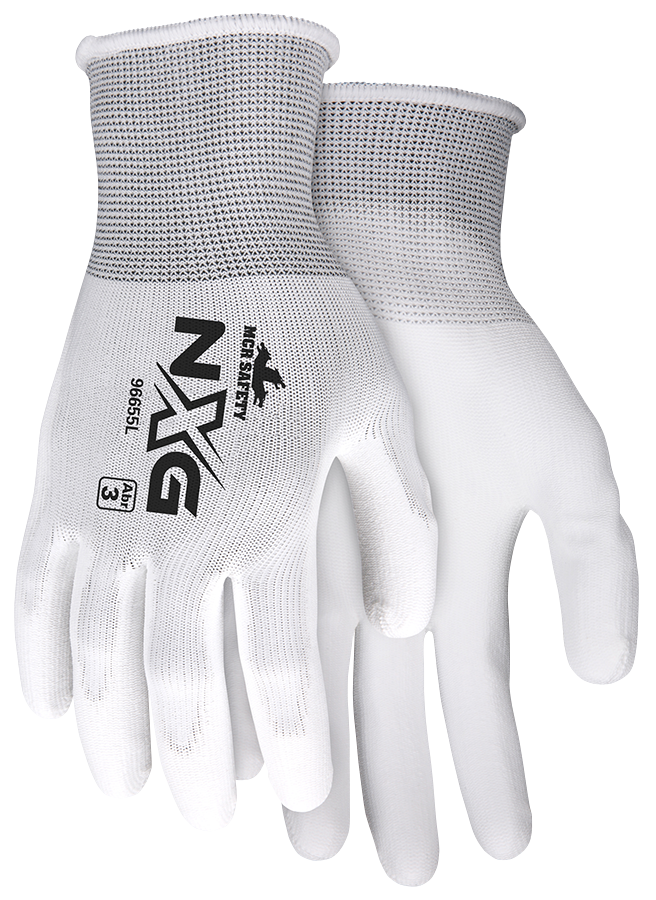
96655 is our white edition of this polyester glove.
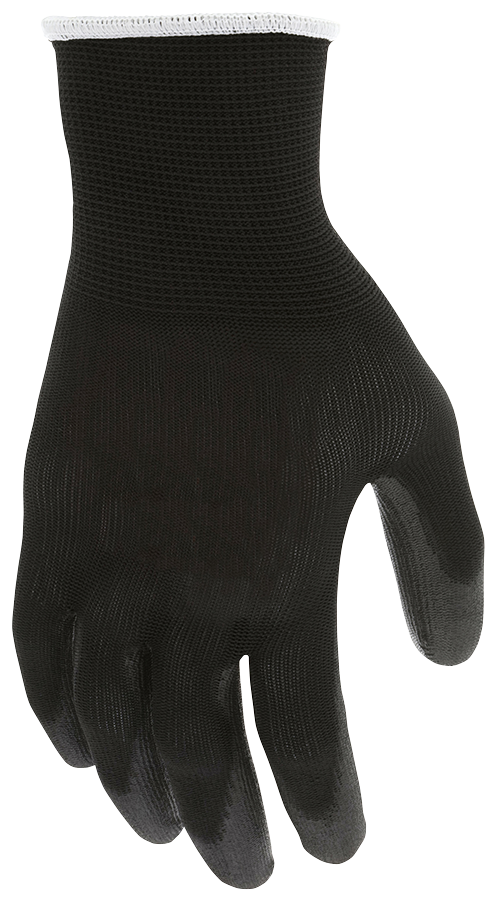
B96699 offers users a completely black glove design with no logos and used polyester fiber to keep costs low.
Common Questions

What is nylon made of?
- Nylon is a synthetic thermoplastic linear polyamide derived from carbon-based crude oil and coal. Through an intense and highly-pressurized process called condensation polymerization, it is stretched into long, thin strands that are woven together to become nylon fabric.
Is nylon waterproof?
- On its own, nylon is water-resistant but not waterproof. It can be made into waterproof fabric by applying a chemical waterproofing agent.
Is nylon plastic?
- Yes. Nylon is a type of plastic known as a thermoplastic that comes from crude oil and is refined into fibers that can be woven into nylon fabric.
Does nylon shrink?
- Nylon doesn't shrink and holds its shape well. Fabric made with a nylon blend may shrink depending on the other fibers used.
Is nylon a polymer?
- Yes. Nylon is a carbon-based synthetic polymer, and its chemical structure is linked with peptide bonds.
Is nylon biodegradable?
- Since it is technically a type of plastic, conventional nylon is not biodegradable. However, scientists are working on creating alternative forms of nylon that are partially or entirely biodegradable.
Is nylon breathable?
- Yes. Nylon is breathable enough to be used in athletic and protective clothing garments. However, polyester is considered more breathable since it wicks moisture and dries quickly.
When was nylon invented?
- Nylon 66 was developed in the early 1930s at DuPont and was patented in 1935.
What is polyester made of?
- Polyester fabric is derived from petroleum and is considered a crude oil product.
Can you iron polyester?
- Polyester can be carefully ironed using a specific technique. Use a low-temperature setting on a steam iron and gently move the iron across the fabric. If the low setting is too cool, move the temperature to medium, never exceeding medium, because polyester will melt when exposed to high temperatures.
What does polyester feel like?
- High-quality polyester fabric has a light, silky feel and is slightly clammy, even at room temperature. It's slightly stretchy and quickly snaps back to its original shape. Polyester tends to cling loosely and skim over the skin's surface. Thicker polyester blends and layered polyester fabrics don't have the same airy feel and may lay more heavily on the body.
In nylon vs. polyester, which is weaker when wet?
- Polyester resists moisture better than nylon, although both have a degree of moisture resistance. At higher thread counts, polyester is even more resistant to water. This makes polyester stronger than nylon in terms of moisture resistance.
Keeping You Protected with Proven Fibers

Are you an expert now on polyester and nylon? We hope, at the minimum, you can see that nylon and polyester are both excellent options for work gloves and that you know the main differences between each material. The choice between nylon and polyester depends on your organization's needs and the setting of end use for the products, so weigh the pros and cons carefully before selecting your option. MCR Safety is always here to help you make an informed choice.
Click the below image to leave us comments, questions, or any concerns.
For over 45 years, MCR Safety has proven to be a world leader in gloves, glasses, and garments. Whether it's handling parts with nylon gloves, assembling products with polyester PU gloves, or working at a construction site, we are there, providing solutions to workplace hazards. It's all part of our commitment to protect people.
No matter your industry, we have the personal protective equipment you need.
Click the above image to be taken directly to our PPE online catalog.

Learn more about MCR Safety by checking out our most recent video. For more information, browse our website, request a catalog, find a distributor, or give us a call at 800-955-6887.



